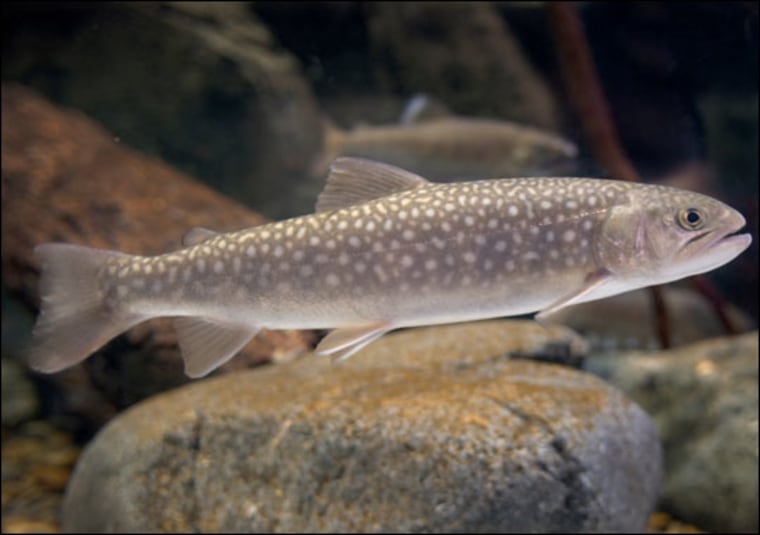Around the world, increasing numbers of male fish are developing female traits — growing new sexual organs and sometimes even producing eggs. The phenomenon that has been blamed mostly on chemicals that get into the water and mimic the female hormone estrogen.
But a new study puts some of the blame on an entirely different class of chemicals — ones that block the action of male hormones called androgens.
It isn't the first study to suggest that anti-androgens might be contributing to the feminization of fish. But the new research found that there are far more of these chemicals in our lakes and streams than anyone realized. And anti-androgenic chemicals in the water might affect human health as well.
"They are going to be some potent players," said Charles Tyler, an ecotoxicologist at the University of Exeter in England. "It is possible that there are going to be many more chemicals that are anti-androgenic than are estrogenic."
Tyler, along with Susan Jobling at Brunel University in London and other colleagues, looked at chemical run-off in 51 rivers throughout the United Kingdom. By combining concentrated water samples with cultures of yeast genetically engineered to have androgen receptors, the scientists were able to measure the amount of anti-androgen activity in each sample.
The researchers' results, published in the journal Environmental Health Perspectives, revealed a significant amount of anti-androgenic activity in nearly all of the samples tested.
The researchers also collected fish from each site. With statistical models, they were able to show that anti-androgens were just as responsible for the feminization of fish as estrogenic compounds were — if not more so.
"The amount of anti-androgen activity is pretty much a surprise," Tyler said. "We expected some, but nowhere near the level of potency we found."
Anti-androgenic chemicals usually come originally from pesticides or pharmaceuticals that get into wastewater. Dozens of studies have linked these chemicals with health problems in mammals, said Gerald Ankley, an ecotoxicologist with the Environmental Protection Agency in Duluth, Minn. But this is one of the first studies to make the link in fish.
"This forms the basis for more focused experimental studies," Ankley said.
For example, scientists will need to figure out exactly which anti-androgenic chemicals are causing problems in fish. (For his part, Tyler says he is on the verge of announcing three new anti-androgenic chemicals that will add to the list of more commonly known compounds).
Researchers also want to test whether certain mixtures of hormone-disrupting compounds are more harmful than any one chemical alone, Ankley added. And the work brings up plenty of questions about what chemicals in our rivers and streams might be doing to human health. After all, people and fish have similar hormonal systems.
"At the end of the day, wildlife are fantastic sentinels for potential human impacts," Tyler said. "If it happens in fish, it can happen in humans."
